A recent capsize talk and demonstration by Richard Woods at the 2016 Wooden Boat Festival inspired me to finally upload a long video my son, Liam, made of Thomas and me successfully righting a turtled Wharram catamaran. As part of our training & preparation for the 2015 Race to Alaska, we intentionally capsized our modified Hitia 17 pedal-sail boat in Lake Washington (Seattle).
The video could have been edited to be more succinct (Liam was just beginning with iMovie), but for the connoisseur, the grueling details may be appreciated. If not, or in case you’re interested in a specific topic or stage of the exercise, here’s a:
Table of contents
- Getting the boat from the Sail Sand Point storage yard
- 01:48 Packing gear at the top of the boat ramp
- 08:22 Thomas tour of items stored in port hull
- 09:00 Scott tour of items stored in starboard hull
- 11:45 Discussion of righting line placement
- 12:50 Getting into dry suits
- 13:30 Putting boat in Lake Washington
- 14:00 Pedal-sailing to the capsize location
- 16:00 First attempts to capsize
- 17:30 Re-thinking how to cause the capsize
- 19:00 Re-positioning under pedal power
- 20:00 Second attempts to capsize
- 20:45 Capsize!
- 22:40 Both Scott and Thomas back aboard (overturned tramp), organizing lines [immersion time was about 2 minutes]
- 24:15 Recovery attempt 1
- 24:50 Recovery fail 1: slipped off keel and fell into water
- 25:30 Recovery attempt 2
- 26:30 Recovery fail 2: not enough leverage at middle of keel
- 26:55 Opening hatch on port main hull?
- 27:00 Re-thinking strategy
- Successful recovery (takes 2-3 minutes)
- 27:30 Standing on bow
- 27:55-28:05 Rapidly venting air as water enters hull
- 29:00 More venting as bow quickly sinks and upper hull starts to rise from water
- 29:15 We move back towards center of keel from the bow (gaining leverage)
- 29:33 Trampoline is vertical
- 29:38 Boat is back upright (with cabin coaming ~20-30 cm above water line, rail in/near water line)
- 29:50 Reboarding on the hull that’s lower in the water
- Pumping/bailing out begins [lasts at least 4 minutes]
- 30:05 Thomas starts pumping with hand bilge pump while Scott cleans lines and gets bailer and bucket
- 31:10 Using bucket to empty port hull while sailing to beach
- 32:20 Using bailer and bilge pump now
- 33:45 Back on the beach (with “dry” bilge)
- 34:00 Shoreside thoughts
Looking at these time stamps (and recognizing that Liam may have edited out some portions of the continuous footage) it looks like the righting process could be reduced to about 2-3 minutes with practice. We were immersed for about 2 minutes and we spent at least 4 (maybe 10?) minutes pumping/bailing the flooded hull dry.
Here are some frame-grabs:
A key question is whether it’s better to remove weight from the up-going hull, or add weight to the down-going hull (by flooding it). Would it be worth it to stay immersed much longer, open up the hatch on the hull to be lifted, and remove all heavy gear from it (if that can be done without inadvertently adding weight in the form of flooding water!)?
Things we could do differently next time:
- Try capsizing using a halyard (thereby leveraging the mast like a gin pole)
- Try recovering with one person on the other’s shoulders
- Try water bags and dual righting lines
- Try using the mast or a pole for righting (e.g. like a gin pole)
- Try flooding a hull by standing on stern, rather than bow (and also flooding further/faster by having both sailors stand on bow, or in a bow loop)
Questions
- Is it worth it (or even possible) to put enough flotation at the mast head to prevent turtling?
- Is it helpful to remove rigging (e.g by freeing snotters and halyard) and/or to “lower” the sail (lashing to tramp, for example?)
- Is single-handed righting? Possible?
- What if both hatches are open during capsize? Does water flow in/out of hulls such that it could be righted in any downflooded initial condition (e.g. breaking waves fill both hulls, then flip boat? Or is an air vent in each hull side needed?
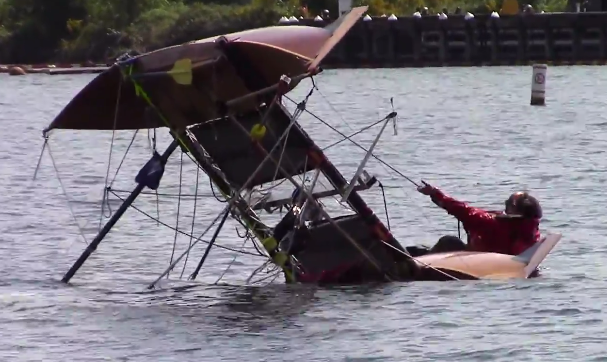

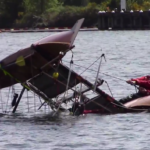
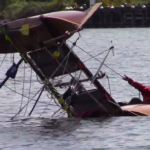
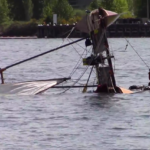
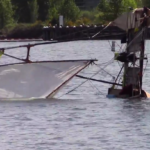
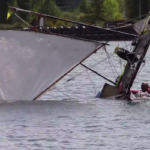
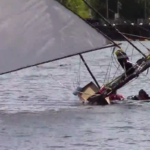
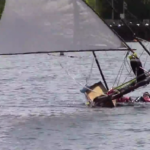
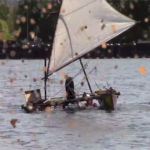
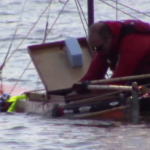
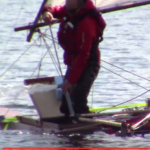
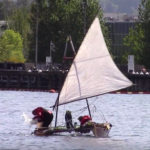
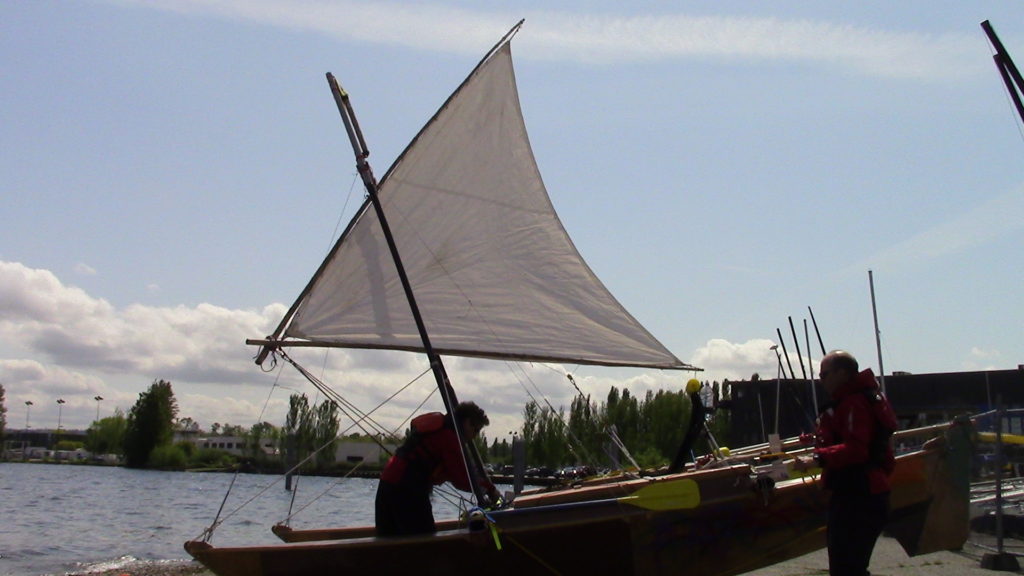
Hey guys, I am interested in your sail configuration, could you give some info please.
Cheers Ron
Hey Ron,
Start here to get some sense of my experience with crab claw rigs, including performance data — http://econscience.org/tiki/2015/02/15/performance-of-a-bamboo-polytarp-crab-claw-sail-on-a-tiki-21-catamaran/
LMK if you have particular questions about the A-frame mast or the sea-trials we did with various crab claw sails before and during the 2015 Race to Alaska…
Best regards,
Scott